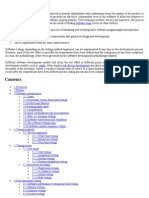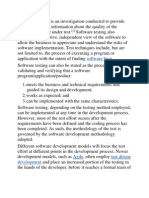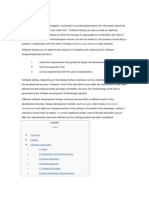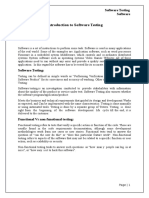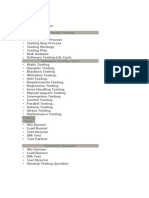0% found this document useful (0 votes)
23 views1 pageSoftware Testing Overview & Techniques
Software testing is a process used to evaluate software and help ensure it meets requirements, responds correctly to various inputs, performs efficiently, and is usable as intended. It involves executing the software and checking that it satisfies criteria like functionality, reliability, usability and installability. As testing all possibilities is infeasible, strategies are used to select representative tests. Testing is iterative, with fixing one bug sometimes uncovering others, and can be done at different stages of software development. The goal is to provide objective information about software quality and failure risk.
Uploaded by
AnaMaria IordanCopyright
© © All Rights Reserved
We take content rights seriously. If you suspect this is your content, claim it here.
Available Formats
Download as DOCX, PDF, TXT or read online on Scribd
0% found this document useful (0 votes)
23 views1 pageSoftware Testing Overview & Techniques
Software testing is a process used to evaluate software and help ensure it meets requirements, responds correctly to various inputs, performs efficiently, and is usable as intended. It involves executing the software and checking that it satisfies criteria like functionality, reliability, usability and installability. As testing all possibilities is infeasible, strategies are used to select representative tests. Testing is iterative, with fixing one bug sometimes uncovering others, and can be done at different stages of software development. The goal is to provide objective information about software quality and failure risk.
Uploaded by
AnaMaria IordanCopyright
© © All Rights Reserved
We take content rights seriously. If you suspect this is your content, claim it here.
Available Formats
Download as DOCX, PDF, TXT or read online on Scribd
/ 1
















